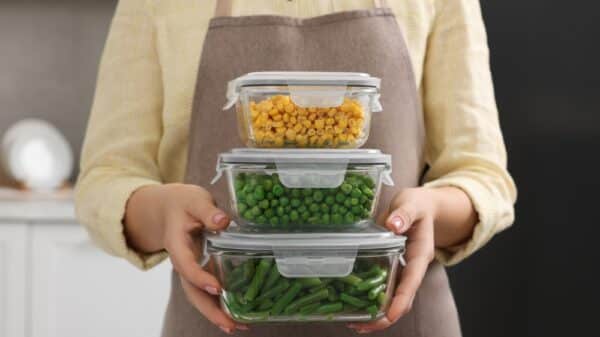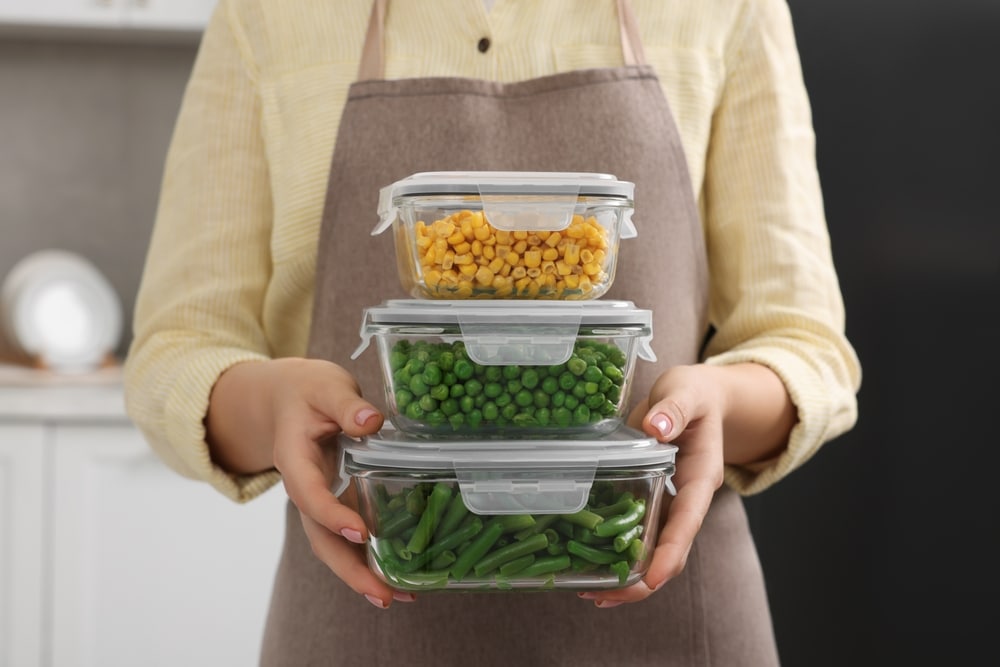Choosing glass for your food storage is an effective method to lessen your dependency on plastic. Additionally, selecting glass might also enhance your well-being (not to mention elevate your fridge aesthetics and motivate you to consume your leftovers).
Below, food safety specialist Trevor Craig, corporate director of technical training and consulting at Microbac Laboratories, explains when and why storing food in glass containers is preferable. Furthermore, he shares best practices and tips for navigating the use of plastic containers when they are unavoidable or a more practical choice for your budget and storage needs, without compromising your health.
3 reasons glass containers are ideal for (most) food storage
1. Glass can safely handle extreme temperatures
Craig points out that glass is typically safer across a broad temperature spectrum. Unlike plastic, glass can endure “high or low temperatures, retain its shape, and prevent any breakdown that could release harmful chemicals,” he explains. For these reasons, glass containers are perfect for safe, long-term food preservation in freezers. Additionally, glass can tolerate intense heat in the dishwasher, which leads us to the next benefit.
2. Glass is more hygienic
You’re likely familiar with the struggle of removing that stubborn marinara sauce stain from plastic containers. This happens because plastic is porous. “Glass is non-porous, which makes it simpler to clean. Consequently, there are fewer stains and fewer places for food and bacteria to hide that can be hard to clean,” Craig elaborates.
In contrast, plastic poses challenges regarding cleanliness. As Kate Reeder, MCN, RDN, LDN, previously explained to Well+Good, plastic food storage can become a genuine breeding ground for bacteria. “Plastic is a porous material, meaning it has tiny holes that enable particles to penetrate and be absorbed,” she cautions. Furthermore, Trevor notes that plastic is more likely to retain odors, which—simply put—is far from appetizing.
3. Glass has an extended lifespan
Although glass food storage containers are often pricier than their plastic counterparts, they typically offer better value for your food quality, health, and overall longevity. “Glass is more durable, can be reused, and is recyclable,” states Craig. “This is not always true for plastic, which can warp or crack and should be replaced more frequently.” Of course, careful handling of glass is necessary to prevent breakage. Yet if you can manage this, you can expect to optimize your investment over time compared to plastic—all while contributing to decreased future plastic waste in the environment.
Important notes and safety tips for plastic food storage containers
While glass food storage boasts significant benefits, it’s likely that you cannot—and won’t—use them for every food storage scenario. “Generally, glass is safer but may not suit everyone or every situation,” Craig points out. “It typically costs more, lacks child-proof features, and can be fragile as well. Furthermore, it can be cumbersome and inconvenient for situations such as camping, caring for toddlers, or taking lunches on the go.”
Choose food-safe plastic
When it’s more feasible to store or transport food in plastic containers, Craig recommends using the safest options available. “PET or PETE (polyethylene terephthalate), HDPE or LDPE (low- and high-density polyethylene), and PP (polypropylene) are all food-safe,” he advises. “You can usually find this information indicated on the bottom of the container or on the packaging.”
Select BPA-free options
Craig strongly encourages using plasticware that is clearly labeled as BPA-free. BPA is a chemical employed to solidify plastic and line food cans, and it has been linked to various health issues, including early puberty, breast cancer, and cardiovascular and metabolic disorders.
Avoid reusing single-use products
Moreover, Craig cautions that not all plastics are intended for reuse. This includes many takeout and delivery containers, designed for one-time use and generally less durable than the plastic containers purchased for long-term use. (This also applies to single-use plastic water bottles; as Craig previously noted to Well+Good, “they can deteriorate and leak harmful chemicals” when reused.)
“Many single-use plastics are also not microwave-, dishwasher-, or freezer-safe, and none are suitable for oven use,” he notes. “Overall, consider food containers special plastic crafted for short-term storage (days or weeks)—not single-use plastic items like wraps, utensils, or bottles.”
Dispose of damaged containers
Finally, he recommends discarding plasticware as soon as it becomes damaged—such as being scratched, warped, discolored, or odorous. “When recycling, check your local regulations to see if it can be recycled, as many types of plastic are not,” he adds. (In contrast, glass can be recycled indefinitely, presenting yet another advantage of this storage option.)
Image Source: New Africa / Shutterstock

































